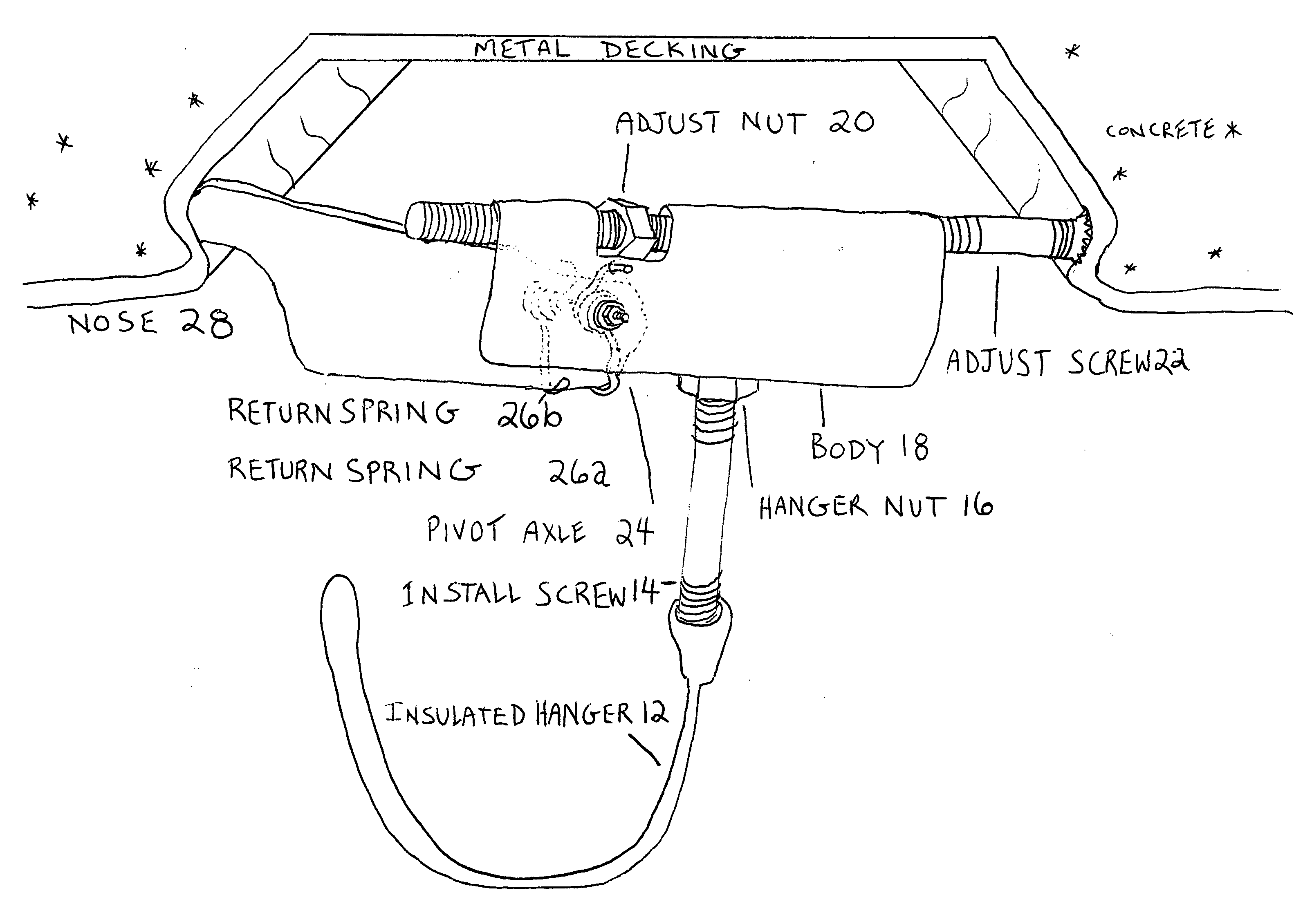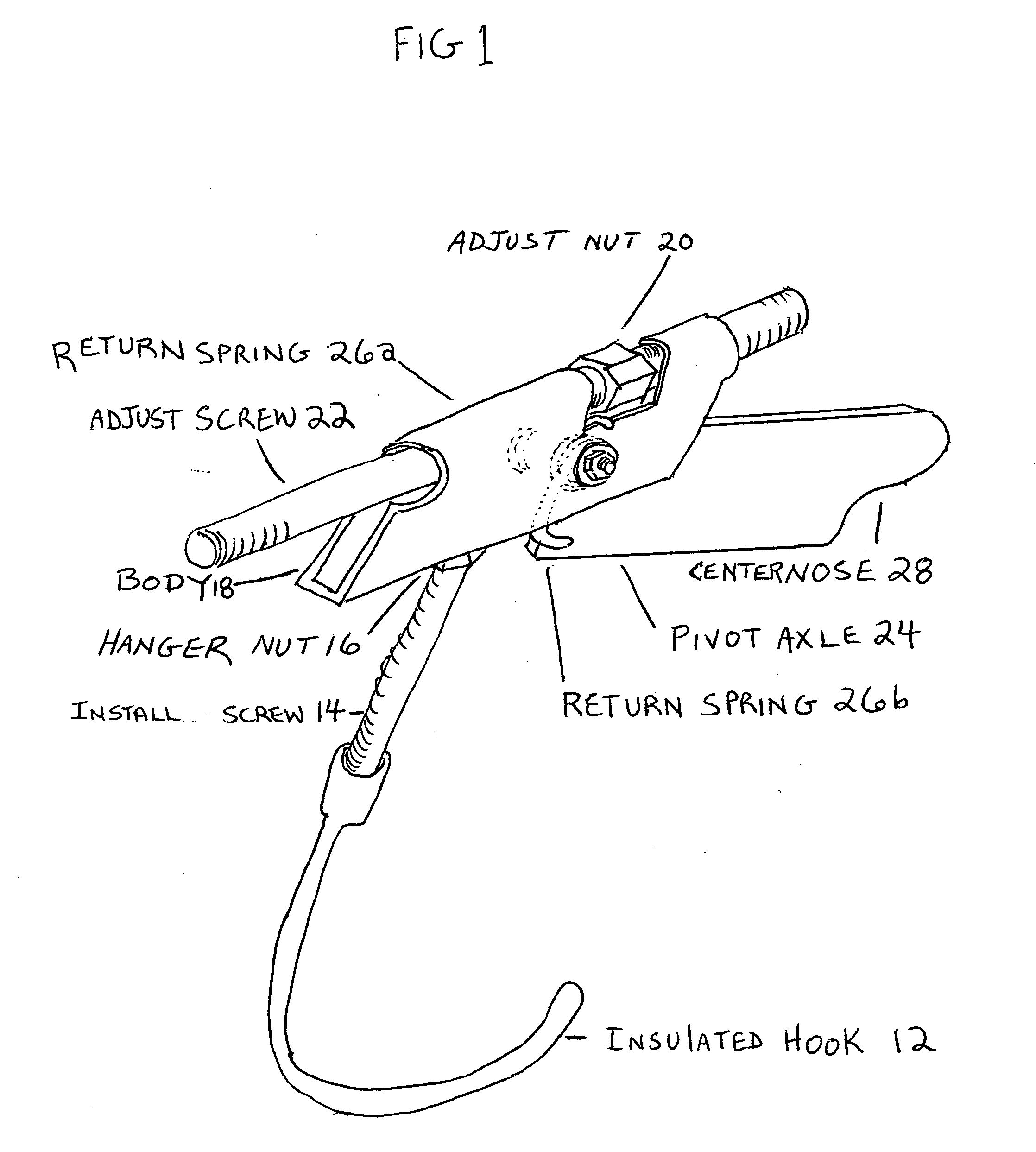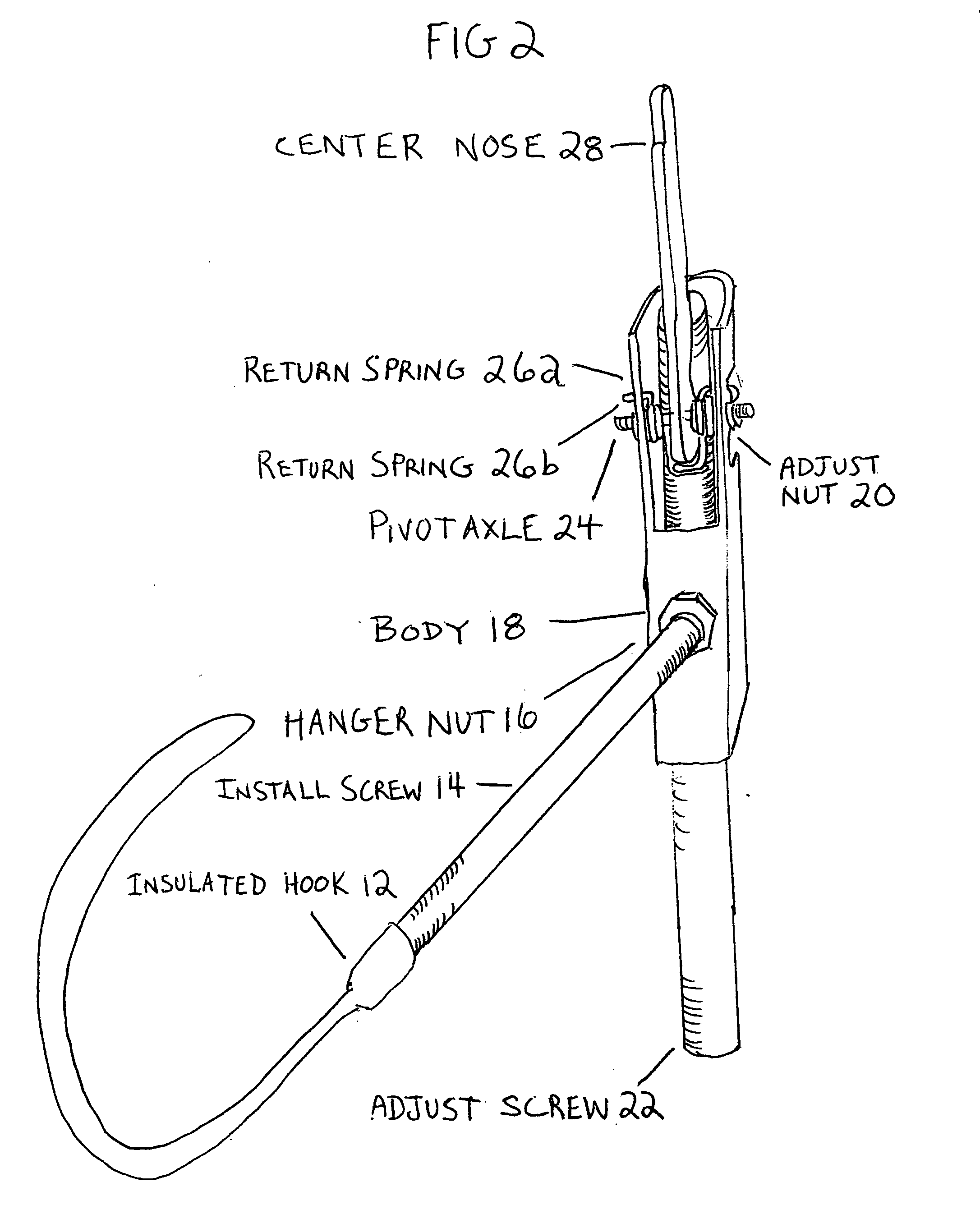Hanger with an insulated hook
- Summary
- Abstract
- Description
- Claims
- Application Information
AI Technical Summary
Benefits of technology
Problems solved by technology
Method used
Image
Examples
Embodiment Construction
[0047]FIGS. 1 and 2 show a top and bottom perspective of the device. Insulated hook 12 is insulated and will be made of but not limited to, plastic, with a female screw receiving end adaptable to a standard piece of all-thread or install screw 14. Install screw 14 is a standard piece of all-thread cut to a desired length and will have hook 12 screwed on one end. The other end of install screw 14 will screw into hanger nut 16. Hanger nut 16 will be attached securely, for example by welding, to the bottom of body 18. The body 18 will envelope the adjust nut 20 and the adjust screw 22. Adjust screw 22 will be threaded into adjust nut 20 into and through the body 18. Body 18 will also house the toggle joint or pivot axle 24. Nose 28 will be attached to the body 18 by pivot axle 24. Wrapped around pivot axle 24 and anchored to the body 18 are the return springs 26a and 26b. The return springs 26a and 26b will be pre-tensioned and attached also to the nose 28.
OPERATION OF INVENTION
[0048]T...
PUM
 Login to View More
Login to View More Abstract
Description
Claims
Application Information
 Login to View More
Login to View More - R&D
- Intellectual Property
- Life Sciences
- Materials
- Tech Scout
- Unparalleled Data Quality
- Higher Quality Content
- 60% Fewer Hallucinations
Browse by: Latest US Patents, China's latest patents, Technical Efficacy Thesaurus, Application Domain, Technology Topic, Popular Technical Reports.
© 2025 PatSnap. All rights reserved.Legal|Privacy policy|Modern Slavery Act Transparency Statement|Sitemap|About US| Contact US: help@patsnap.com



